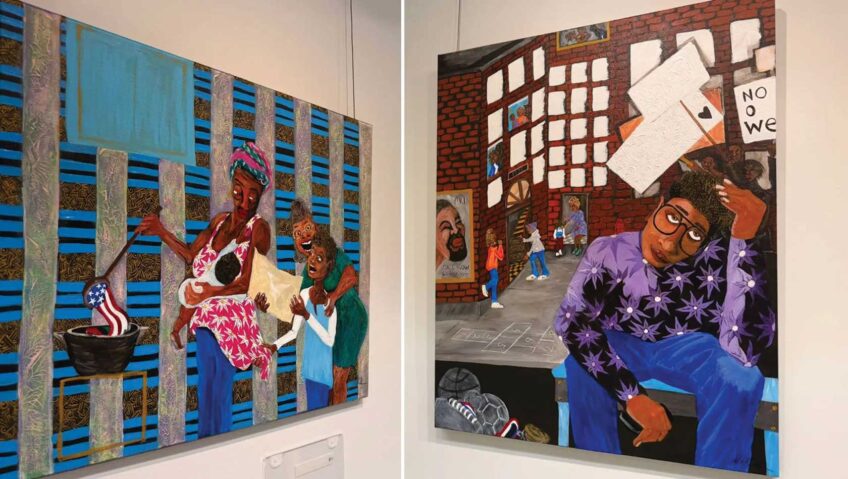National, state groups push to preserve foreclosure aid
The Home Affordable Modification Program (HAMP),
A broad coalition of state and national organizations is pushing to preserve a key federal program that has helped more than 1.1 million troubled homeowners and reduced mortgage payments by a median savings of $546 each month.
The Home Affordable Modification Program (HAMP), created in response to the nation’s housing crisis, is set to close shop on Dec. 31. In its remaining months, housing and consumer advocates are urging the U.S. Treasury Department to reconsider.
A March 26 letter to U.S. Treasury Secretary Jacob J. Lew was co-signed by 14 national organizations such as the Leadership Conference on Civil and Human Rights, National Fair Housing Alliance, National Urban League and the Center for Responsible Lending (CRL). Additionally, another 22 state and local groups, including the California Reinvestment Coalition, Mississippi Center for Justice and New York’s Empire Justice Center, joined with their national colleagues to fight for more foreclosure assistance.
“Research has shown that foreclosure and delinquency rates have disproportionately impacted African American and Latino families, and median household wealth has dramatically declined,” the letter states. “High foreclosure rates in communities of color have also impacted those homeowners neighboring foreclosed properties, and estimates show that these properties stand to lose $1 trillion in home equity as a result.”
Launched in 2009, HAMP initially sought to lower monthly mortgage payments to an affordable and sustainable level through a uniform loan modification process. HAMP funding was a part of the $29.9 billion authorized for the Making Home Affordable Program. Later in 2012, program options were expanded to focus on principal reduction modifications, expand relief for unemployed homeowners and ease other alternatives to foreclosures, like short sales.
To date, $12 billion has been obligated to pay incentives for HAMP homeowners already in the program. With the approaching expiration date, any unspent funds will ultimately be returned to the treasury’s general fund. Yet many communities have yet to economically recover.
For example, HAMP’s unemployment program offers a minimum of 12 months’ temporary forbearance to allow these homeowners to focus on securing new employment while still owning their homes. Depending upon homeowner circumstances, forbearance plans can be approved with some required payment or none at all. Thus far, over 30,500 homeowners have accessed this program.
It is also relevant to note that African American unemployment is higher than most. According to recent U.S. Bureau of Labor statistics, black unemployment — at 14 percent — is double that for white Americans.
The nation’s metro areas with the largest HAMP participation rates are Los Angeles-Long Beach, New-York-New Jersey, Miami-Fort Lauderdale, Chicago-Northwest Indiana and California’s Riverside-San Bernardino. California and Florida homeowners represented more than one-third of all HAMP activity.
Additionally, the most recent HAMP program performance report shows that the program is working, as it increasingly helps eligible borrowers by forgiving a portion of their mortgage debt. HAMP homeowners that received permanent mortgage modifications collectively were granted $9.2 billion in principal reductions. Additionally, another 114,000 homeowners avoided foreclosures through short sales or deed-in-lieu.
Nationwide, the average non-HAMP mortgage modification reduced monthly payments by $389, while the average HAMP modification reduced the same monthly payments by $558. Similarly, non-HAMP servicers reduced interest rates in 73 percent of modifications made in the fourth quarter of 2012. Participating HAMP servicers reduced interest rates for 81 percent of borrowers during this same period.
Of all HAMP trial modifications, 80 percent of the homeowners were at least 60 days delinquent at the trial start. The chief reason — for 68 percent of the troubled homeowners — was financial hardship due to reduced income or unemployment.
In 2012, CRL research found that among the 10.9 million homes that went into foreclosure between 2007 and 2011, over half of the “spillover” cost to nearby homes has led to a $1 trillion loss in home equity for African American and Latino families. High concentrations of foreclosures in neighborhoods of color perpetuated disproportionate burdens in America’s continuing foreclosure crisis.
Coalition leaders agree: “Effective housing policies must recognize that neighborhoods with higher foreclosure rates and deeper foreclosure-related impacts will take more time to recover.”
Charlene Crowell is a communications manager with the Center for Responsible Lending.






